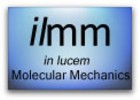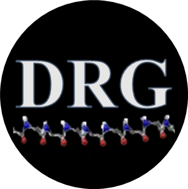
We are developing a new modeling package in C that makes use of new algorithms and modern approaches used in the field of computer science as well as a parallelized code to allow us to move to larger systems and take advantage of dramatic changes in computer hardware and clustering strategies. Aside from NAMD, the commonly used simulation packages (ENCAD, AMBER, CHARMM, and GROMOS) were developed decades ago and many of the procedures employed were necessary because CPUs were so much slower. To capitalize on advances in modern computer hardware scientists need modern software!
At the core of our new software environment, in lucem Molecular Mechanics (ilmm), is a scalable parallel molecular mechanics kernel. This kernel is responsible for scheduling and check-pointing module execution across computational elements. Modern software engineering techniques and modular design are being used in the development to ensure ease of maintenance, modification, validation, and evolution of ilmm. As a result, everything from the molecular mechanics potential function, simulation algorithm, trajectory input/output, subsequent analysis, and data mining are implemented in the form of software modules that plug into and utilize the kernel's application programming interface for performing high throughput parallel computation. The kernel and modules are highly portable - compiling and running in any POSIX compliant environment from handhelds, laptops and desktops to inexpensive computing clusters to supercomputers.
As a point of origin for the ilmm development project, emphasis has been placed on faithfully reproducing the published methods employed by ENCAD. Because ilmm and ENCAD utilize the same, well-studied, potential function and integration algorithm, results from ilmm can be compared with those from ENCAD. In this way, ilmm inherits the wealth of published agreement with experiment and proven predictions made with ENCAD.
ilmm
- Beck D.A.C., McCully M.E., Alonso D.O.V., Daggett V. (2000-2012) in lucem Molecular Mechanics (ilmm). University of Washington, Seattle.
- Beck D.A.C. and Daggett V. Methods for molecular dynamics simulations of protein folding/unfolding in solution. Methods 34:112-120, 2004. [DOI]
Force Field Used in ilmm and ENCAD
- Levitt M., Hirshberg M., Sharon R., Daggett V. Potential energy function and parameters for simulations of the molecular dynamcis of proteins and nucleic acids in solution. Computer Physics Communications 91:215-231, 1995. [DOI]
- Levitt M., Hirshberg M., Sharon R., Laidig K.E., Daggett V. Calibration and testing of a water model for simulation of the molecular dynamics of proteins and nucleic acids in solution. Journal of Physical Chemistry B 101:5051-5061, 1997. [DOI]
ENCAD
- Levitt M. (1990) ENCAD: Energy calculations and dynamics. Stanford University, Palo Alto and Yeda, Rehovot, Israel.
